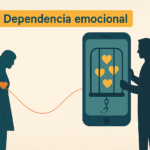
1. what is a blog
What is a Blog?
Purposes for Writing a Blog
When you decide to create a blog, you do it with a clear purpose in mind. Therefore, I invite you to consider if any of these reasons resonate with you, as it could be the right time to start your own blog:
Sharing Information and Knowledge: A blog is an exceptional platform for disseminating information and knowledge on specific topics to a wide audience. This not only positions you as an authority in your field but also allows you to build a solid reputation. Think of your blog as a showcase of your expertise and knowledge, where each post reinforces your credibility and displays your professional and personal trajectory.
Expressing Opinions and Ideas: If you have opinions and ideas you wish to share, especially on cultural, political, or current issues, a blog offers the perfect space to do so. Here you can delve into analyses, support your points with data and references, and present your arguments in a structured manner. Additionally, blogs allow interaction, which can enrich your posts with perspectives and debates in the comments.
Documenting Experiences: Whether personal or professional, documenting your experiences on a blog can be incredibly valuable. You don’t need to create innovative products or disruptive services to do so; sharing your personal story authentically can inspire and connect with others. This visibility not only benefits you in the present but also builds a digital legacy that can serve you in the future.
Promoting a Business or Brand: Blogs are powerful tools for promoting businesses and brands. Through a well-structured blog, you can showcase products or services, offer content that attracts your target audience, and enhance your online visibility. A website with an active blog can be the hub of your digital strategy, where potential customers find not only information but also a platform to interact directly with you.
Creating a Community: A blog can be the core of a vibrant community focused on common interests or passions. While social media facilitates the flow of interactions, a blog provides a deeper and more organized space for dialogue and shared learning. For instance, if you offer courses or workshops, your blog can be a place for participants to comment, share their experiences, and connect beyond the formal content.
In addition to these points, consider that a blog can also be an instrument to improve your writing skills, expand your professional network, and explore new opportunities for personal and professional growth. If any of these reasons resonate with you, it is a clear indication that it is time to begin your journey in the world of blogging. Go ahead and enjoy the creative and enriching process that a blog can offer you!
Major Blogs and Figures
It’s difficult to definitively determine the top blogs, as it depends on various factors such as the subject, audience, and language. However, we can mention some blogs that are popular globally and in Spanish:
Global Blogs:
Engadget
Theme: Technology and gadgets
Unique Monthly Visitors: Over 20 million
Description: Latest news and reviews on technology and gadgets.
Visit EngadgetMashable
Theme: Technology, business, and pop culture
Unique Monthly Visitors: Over 16 million
Description: Explores global technology, business, and digital culture.
Visit MashableTechCrunch
Theme: Startups and technology
Unique Monthly Visitors: Over 15 million
Description: News about startups, new technology, and Silicon Valley.
Visit TechCrunchThe Huffington Post
Theme: News and current affairs
Unique Monthly Visitors: Over 12 million
Description: Coverage of major news, politics, and entertainment.
Visit The Huffington PostLifehacker
Theme: Productivity and personal organization
Unique Monthly Visitors: Over 10 million
Description: Tips and tricks to optimize daily life.
Visit LifehackerXataka
Theme: Technology
Unique Monthly Visitors: Over 5 million
Description: A technology blog.
Visit XatakaGenbeta
Theme: Technology
Unique Monthly Visitors: Over 4 million
Description: A technology blog.
Visit GenbetaThe Marketing Blog
Theme: Digital Marketing
Unique Monthly Visitors: Over 3 million
Description: A digital marketing blog.
Visit The Marketing BlogVitonica
Theme: Health and Wellness
Unique Monthly Visitors: Over 2 million
Description: A health and wellness blog.
Visit VitonicaSpeaking Seriously
Theme: Current Affairs and Opinion
Unique Monthly Visitors: Over 1 million
Description: A current affairs and opinion blog.
Visit Speaking SeriouslyIt is crucial to remember that these examples only show a small part of the broad and dynamic universe of blogging. New platforms emerge daily, covering a variety of topics and capturing the interest of diverse audiences. Blogs that achieve success stand out for their ability to engage their audience, provide valuable content, and foster a community around common interests. By examining the leading players in your area, you can discover effective strategies to apply in your own space.
Notice how these blogs structure their posts, interact on social media, and optimize their content for search engines. Explore the exciting world of blogging and the numerous opportunities it offers to share your knowledge and interests. If you are encouraged to start your blog, platforms like WordPress are a good starting point, along with guides for beginners and communities of bloggers where you will find support and advice.
Additional Figures about Blogs in 2023
Total Blogs: Over 600 million
Blogs Created by Individuals: 77%
Blogs Created by Companies: 23%
Monthly Updates: 61%
Blogs with less than 500 Followers: 57%
Source: Statista, Data on Blogs
A Blog as Part of a Digital Ecosystem
A blog can be a fundamental component within a broader digital ecosystem, serving as a key piece in the digital marketing strategy of a company or individual.
What is a Digital Ecosystem?
A digital ecosystem is a network of interconnected digital tools and platforms that work together to achieve a common goal. This goal can be to increase brand awareness, generate leads, sell products or services, or simply share information and build community.

How Does a Blog Function Within a Digital Ecosystem?
A blog can function in various ways within a digital ecosystem:
As a content source: The blog can be the primary source of content for the digital ecosystem, providing valuable and engaging information for the target audience. This content can then be shared on other platforms, such as social media, email, and associated websites.
As a lead generator: The blog can be used to attract new potential customers and generate leads. This can be done by offering downloadable content, signing up for a newsletter, or participating in contests.
As a sales platform: The blog can be used to directly sell products or services. This can be achieved by creating dedicated product pages, integrating an online store, or promoting special offers.
As a community tool: The blog can be used to build a community around the brand or the blog’s theme. This can be done by allowing readers to comment on blog posts, participate in forums, or join online groups.
Benefits of Using a Blog as Part of a Digital Ecosystem:
Reach Expansion: Integrating a blog with other digital platforms enhances the spread of content to a broader audience. While social media is ideal for short and entertaining content, a blog allows for deeper exploration of topics and attracts those users interested in further information initially presented on other channels.
Increased Engagement: A blog fosters greater commitment and interaction with the audience compared to other digital platforms. As a kind of personal business canvas, the blog allows for detailed showcasing of your products or services in an exclusive environment, without the common distractions of other accounts or advertising on social media.
Improved Return on Investment (ROI): Blogs represent a cost-effective strategy for generating prospects and sales, as they do not involve large initial investments or ongoing costs in advertising. Effectiveness is enhanced by integrating email marketing tools, content selling platforms, and payment systems, thereby maximizing financial returns.
Total Control Over Content: Owning a blog gives you absolute control over the content you publish and how you interact with your audience. Additionally, it benefits you with access to detailed analytics through tools like Google Analytics, allowing you to monitor interactions and capture the intentions of your blog visitors.
General Sitemap for a Blog
To design an efficient and effective blog, the site structure (or sitemap) plays a crucial role. A good sitemap not only helps visitors navigate the site easily but also enhances SEO by ensuring that search engines can index the content properly. Here is an example of how a sitemap for a blog might be structured:
1.-Home
The main page that displays the latest entries or highlights. It should immediately capture attention with an attractive design, showing the most recent or featured entries and a brief introduction or summary of the blog.
2.-About
Information about the Author or the Mission of the Blog: Provides a personal story or the mission behind the blog, which helps to build a connection with readers.
3.-Posts
List of all blog entries, usually organized from the most recent to the oldest. Includes filters and a search bar to help readers quickly find content of interest. Additionally, I suggest that you add content in various formats, not only texts and images but also videos and podcasts.
4.-Contact
Contact form and other ways to connect with the author. Essential for building networks and collaboration opportunities. Should include various contact methods. You can include apps like WhatsApp, Facebook Messenger, etc.
5.-Store
Products or merchandise. Important for blogs that sell products or services. It should be easy to navigate and secure. On this point, it is very important that you design some product or service to include in your store, as there is always something that can generate income for your blog.
6.-Terms of Use and Privacy Policy
Legal details about the use of the site and the management of personal data. Fundamental to comply with legal regulations and generate trust among users.

